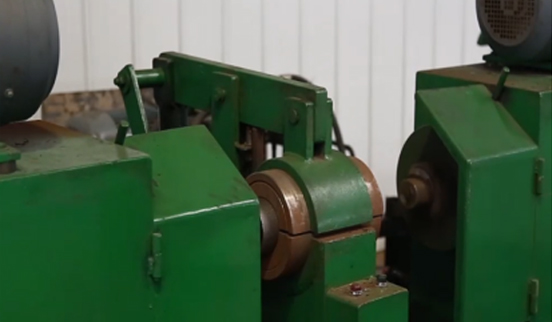 Afrikaans
Afrikaans  Albanian
Albanian  Amharic
Amharic  Arabic
Arabic  Armenian
Armenian  Azerbaijani
Azerbaijani  Basque
Basque  Belarusian
Belarusian  Bengali
Bengali  Bosnian
Bosnian  Bulgarian
Bulgarian  Catalan
Catalan  Cebuano
Cebuano  Corsican
Corsican  Croatian
Croatian  Czech
Czech  Danish
Danish  Dutch
Dutch  English
English  Esperanto
Esperanto  Estonian
Estonian  Finnish
Finnish  French
French  Frisian
Frisian  Galician
Galician  Georgian
Georgian  German
German  Greek
Greek  Gujarati
Gujarati  Haitian Creole
Haitian Creole  hausa
hausa  hawaiian
hawaiian  Hebrew
Hebrew  Hindi
Hindi  Miao
Miao  Hungarian
Hungarian  Icelandic
Icelandic  igbo
igbo  Indonesian
Indonesian  irish
irish  Italian
Italian  Japanese
Japanese  Javanese
Javanese  Kannada
Kannada  kazakh
kazakh  Khmer
Khmer  Rwandese
Rwandese  Korean
Korean  Kurdish
Kurdish  Kyrgyz
Kyrgyz  Lao
Lao  Latin
Latin  Latvian
Latvian  Lithuanian
Lithuanian  Luxembourgish
Luxembourgish  Macedonian
Macedonian  Malgashi
Malgashi  Malay
Malay  Malayalam
Malayalam  Maltese
Maltese  Maori
Maori  Marathi
Marathi  Mongolian
Mongolian  Myanmar
Myanmar  Nepali
Nepali  Norwegian
Norwegian  Norwegian
Norwegian  Occitan
Occitan  Pashto
Pashto  Persian
Persian  Polish
Polish  Portuguese
Portuguese  Punjabi
Punjabi  Romanian
Romanian  Russian
Russian  Samoan
Samoan  Scottish Gaelic
Scottish Gaelic  Serbian
Serbian  Sesotho
Sesotho  Shona
Shona  Sindhi
Sindhi  Sinhala
Sinhala  Slovak
Slovak  Slovenian
Slovenian  Somali
Somali  Spanish
Spanish  Sundanese
Sundanese  Swahili
Swahili  Swedish
Swedish  Tagalog
Tagalog  Tajik
Tajik  Tamil
Tamil  Tatar
Tatar  Telugu
Telugu  Thai
Thai  Turkish
Turkish  Turkmen
Turkmen  Ukrainian
Ukrainian  Urdu
Urdu  Uighur
Uighur  Uzbek
Uzbek  Vietnamese
Vietnamese  Welsh
Welsh  Bantu
Bantu  Yiddish
Yiddish  Yoruba
Yoruba  Zulu
Zulu Design and Applications of Conveyor Troughing Idlers in Material Handling Systems
Understanding Conveyor Troughing Idlers A Key Component for Efficient Bulk Material Handling
Conveyor systems are indispensable in various industries, facilitating the efficient transport of bulk materials. Among the crucial components of these systems are conveyor troughing idlers, which play a vital role in ensuring the functionality and reliability of conveyor belts. This article explores the purpose, types, benefits, and maintenance of troughing idlers, shedding light on their significance in material handling operations.
What Are Troughing Idlers?
Troughing idlers are specialized rollers positioned at an angle to support the conveyor belt and hold materials in a trough-like shape. This design is critical for the stability of the transported materials, preventing spillage and enabling a continuous flow on inclined conveyor systems. Typically made of durable materials such as steel or plastic, troughing idlers can withstand harsh environments, making them ideal for various applications, from mining to agriculture.
Types of Troughing Idlers
Troughing idlers come in different configurations, each suited to specific conveyor designs and material handling requirements
1. Standard Troughing Idlers These are the most common type, featuring a three-roller design set at a common angle (usually 20°, 30°, or 45°). They provide excellent support and help maintain the belt's shape during operation.
2. High-Performance Troughing Idlers Designed for heavy-duty applications, these idlers are reinforced to handle greater loads and resist wear and tear. They are often used in environments with high-impact materials.
3. Return Idlers Positioned on the return side of the conveyor belt, these idlers help maintain belt alignment and prevent sagging. They are typically flat rollers and can differ in size depending on the belt width.
4. Impact Idlers Placed where the material load hits the belt, impact idlers are equipped with rubber cushions to absorb shock, protecting the belt from damage and prolonging its lifespan.
5. Training Idlers These idlers are used to correct the tracking of the conveyor belt, ensuring it stays centered and minimizes the risk of misalignment and wear.
Benefits of Troughing Idlers
Troughing idlers offer numerous advantages that enhance the overall efficiency of conveyor systems
conveyor troughing idlers

- Improved Material Containment The trough design prevents material spillage, which is crucial for maintaining a clean work environment and reducing waste.
- Enhanced Stability By keeping the belt in a stable trough shape, these idlers minimize the risk of belt slippage or misalignment, which can lead to operational disruptions.
- Reduced Wear and Tear High-quality troughing idlers can significantly reduce the wear experienced by the conveyor belt and other components, leading to lower maintenance costs and prolonging the system’s life.
- Increased Load Handling Capability With their robust design, troughing idlers can carry heavy loads, making them suitable for heavy-duty applications in industries such as mining and construction.
Maintenance of Troughing Idlers
To ensure the longevity and efficiency of troughing idlers, regular maintenance is essential. Here are some best practices
- Routine Inspections Regularly check for signs of wear, rust, or misalignment. Early detection of potential issues can prevent more significant problems down the line.
- Lubrication Proper lubrication of the roller bearings is crucial for reducing friction and wear, contributing to smoother operation.
- Replacement of Worn Parts Any damaged components should be replaced promptly to maintain the integrity of the conveyor system.
- Alignment Checks Ensuring that the idlers are correctly aligned helps maintain consistent belt tracking, reducing the risk of misalignment and subsequent damage.
Conclusion
Troughing idlers are fundamental components in conveyor systems, playing a crucial role in supporting the conveyor belt and facilitating the efficient transport of bulk materials. Understanding their types, benefits, and maintenance needs can significantly impact operational efficiency and equipment longevity. As industries continue to rely on advanced material handling systems, the importance of troughing idlers will remain paramount in achieving optimal performance and cost-effectiveness.
-
Trusted Conveyor Solutions from Leading Conveyor Idler Roller ManufacturersNewsJun.27,2025
-
Reliable Return Idler Solutions for Efficient Belt Conveyor SystemsNewsJun.27,2025
-
Precision Conveyor Accessories for Streamlined Material HandlingNewsJun.27,2025
-
High-Quality Belt Conveyor Idler Solutions for Efficient Material HandlingNewsJun.27,2025
-
High-Performance Belt Conveyor Pulleys for Reliable Material HandlingNewsJun.27,2025
-
Enhancing Material Handling EfficiencyNewsJun.27,2025





























